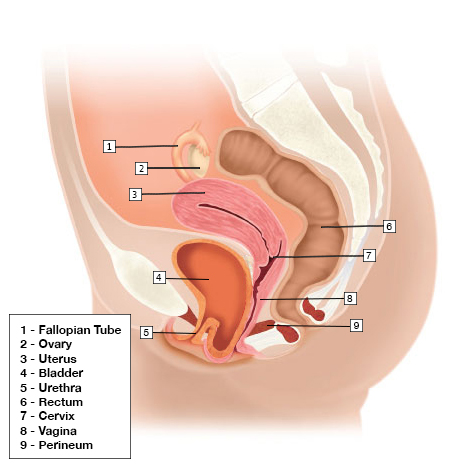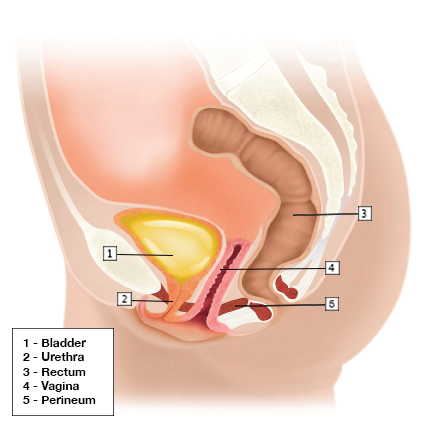Pelvic organ prolapse refers to a pelvic organ (the uterus, bladder or rectum) dropping out of its usual anatomic position into the vaginal canal. Cystocele is specifically a dropping or bulging of the bladder into the vagina. A cystocele, also known as bladder prolapse, occurs when the pelvic floor muscles and the ligaments between the bladder and vagina weaken, allowing the bladder to sag into the vagina. A cystocele may be asymptomatic or may be very symptomatic. When asymptomatic, with no associated pain or complications, this may not require any additional treatment. When symptomatic, common symptoms include pelvic pressure or discomfort, difficulty emptying the bladder, chronic urinary tract infections, or painful intercourse. Women with prolapse may also feel a bulge in the vagina or as if they are “sitting on a ball.” Symptoms may be more noticeable at the end of the day or after standing for long periods of time.
Cystocele
Book An Appointment
I cannot say enough wonderful things about this whole medical practice. I felt that every member of the office and staff team took excellent care of me all along the way. I had major surgical repairs for prolapses, cystocele, rectocele, Da Vinci Sacrocolpoperineopexy, and it all went beautifully. My whole health has improved tremendously as a result. Do NOT hesitate to get the care you need for these conditions and with this medical team. You have nothing to be afraid of. The outcomes will change your quality of life for the better in ways you cannot imagine.
-Lea M.
A cystocele may be asymptomatic in some women. In others, it may cause the following symptoms:
- A soft bulge of tissue in the vagina that protrudes through the vaginal opening
- Pelvic pressure or heaviness
- Difficulty emptying the bladder
- The need to press one’s fingers into the vagina to reduce the bulge (splint) or the need to reposition to empty the bladder
The three main factors that contribute to the development of a cystocele are:
- Hereditary. Cystoceles tend to run in families. There are genes that code for the supporting structures of the pelvic floor and variations in these genes can lead to weakening of the pelvic floor.
- Childbirth. Vaginal deliveries can stretch and weaken the supporting structures of the pelvic floor.
- Age. Supporting structures of the pelvic floor weaken with increased age.
Got questions? Need an appointment? We’re here to help!



